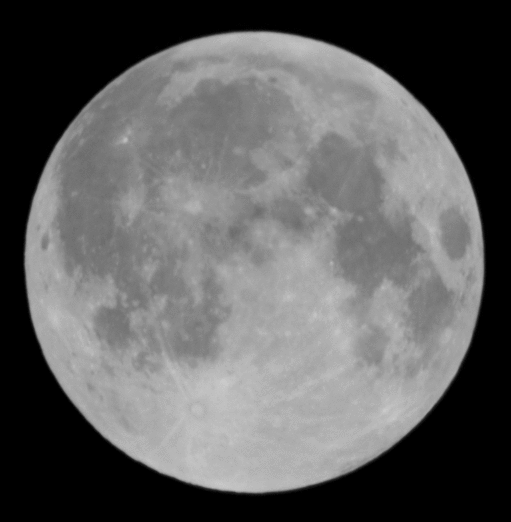« Reading List: As They See 'Em | Main | Reading List: Separation of Power »
Friday, August 7, 2009
Penumbral Lunar Eclipse Imaged

Click image to enlarge.
One of the most subtle phenomena in naked eye astronomy is a penumbral lunar eclipse: the Moon does not pass into the region of the Earth's shadow where the Sun is entirely obscured by the Earth, and consequently, although sunlight on some or all of the Moon is partly blocked by the Earth, the visual effect is very difficult to perceive, especially with the logarithmic transfer function of human vision and its inability to make absolute intensity comparisons of events. Fortunately, here in the 21st century, although we don't (yet) have ATOMIC SPACE CARS, we do have magnificently linear digital sensors in our cameras, so it seemed entirely plausible to me that I'd be able to capture the ever so slight shading of the Earth's fuzzy shadow on the Moon during the penumbral lunar eclipse of August 6th, 2009. So, I set up my Nikon D300 camera and Nikkor 500 mm catadioptric “mirror lens” (you can see them here in another context) about an hour before the eclipse was to begin to allow the optics to equilibrate to the ambient temperature. Then, just before the start of the eclipse, I shot a number of photos of the Moon with various exposure times (although, from previous experience, I was pretty sure 1/500 second with the fixed f/8 aperture of the lens and highest resolution 200 ISO sensitivity of the camera would yield the best results which, in the event, they did). I selected the best pre- and mid-eclipse images with the same exposure time (this was a bit of a judgement call, since as is often the case in mid-summer the sky remains pretty gunky even in the middle of the night, and seeing was iffy throughout the eclipse; but then, I'm accustomed to that). The raw images from the camera sensor were processed using identical parameters with Adobe Lightroom, then exported as TIFF files which were loaded into Adobe Photoshop. Due to the interval between the taking of the images, there was an apparent rotation of the Moon, which I corrected for (almost) with the Photoshop free transform tool. (Yes, there's a tiny bit of residual rotation—so sue me.) I did not do any contrast stretching or other adjustments to the luminosity transfer function. Within the limits of the camera and the software tools in the workflow, this is what the image plane sensor saw. And it saw the penumbral eclipse! Look at the lower left side of the image above, and you can see the effect of the Earth partially obscuring the Sun painted upon the Moon. Few people have ever perceived this visually—certainly I did not; the Moon's disc was sufficiently blinding both before the eclipse and at its maximum that there was no clue such a subtle eclipse was underway. And yet a digital camera and a modicum of image processing can dig out from the raw pixels raining upon us from the sky what our eyes cannot see. Is this cool, or what?Posted at August 7, 2009 01:14